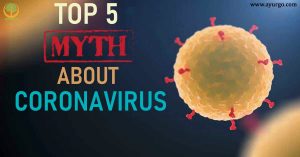Table of Contents
Virus and bacteria are what we would describe as germs and these are the germs that we think about when we think about getting sick.
People are often confused between viruses and bacteria, but they are actually very different than each other.
In this article, we will discuss the difference between virus and bacteria in detail.
First of all, starting with a question,
Which is the most successful living being on the planet?
It is not a human being, it is not a giant like a blue whale, but it is the bacteria, the most successful creatures literally can live anywhere on the planet.
Even in the MARS mission, we were looking for the presence of bacteria for the presence of life, and there are some particles that are much simpler than bacteria that are exhibiting some qualities of life inside the host that represent viruses.
Let’s see the Differences between virus and bacteria.
1. Difference between virus and bacteria – DEFINITION
Bacteria are unicellular for carriers or organisms where genetic material is not surrounded by a nuclear membrane as in Prokaryotes.
Viruses are sub-cellular particles or it can be even simpler than it doesn’t have a cellular organization. It is exhibiting some characteristics of life as it is having genetic material, it can replicate inside the host using the machinery of the host.
Bacteria can survive anywhere on the planet, it is a hot spring where you can see the thermos aquaticus; from this bacteria, we isolate the enzyme TAQ POLYMERASE for PCR (Polymerase chain reaction).
Bacteria can even survive icebergs or hot sulphur springs. It can live inside or outside the host.
Viruses are strict intracellular infectious agents which always required a host to exhibit the characteristics of life. So viruses can be crystallized even outside.
So, it is considered as living as it is showing some characteristic of life, it can even be considered as non-living, as it can be crystallized outside. It doesn’t show living characteristics outside the host.
2. Difference between Virus and Bacteria – SIZE
Bacteria is visible under a compound microscope, the size of bacteria approximately ranges from 200-5000 nanometer.
Viruses are visible only under an electron microscope, approximately 20-400 nanometer in diameter. So, viruses are 10-100 times smaller than bacteria.
You may also like 10 germ infected areas you touch everyday | You cannot afford to miss No 5 & No. 9
3. Difference between Virus and Bacteria – SHAPE
Bacteria exist in different forms, the most common forms are
- Coccus: This is round or spherical shaped
- Bacillus: Rod-shaped, a common example is the curd bacteria LACTOBACILLUS
- Spirillum: twisted or spiral-shaped
Various forms or symmetries of a virus are:
- Helical or Spiral Symmetry
- Cubical or Icosahedral Symmetry
- Complex symmetry
The shape of the virus is all about the shape of the protein coat.
If the shape of the protein coat is spherical, then it is a spiral helical virus and if it is an Icosahedral or cubical, then it is a cubical virus and the complex symmetry is one that is showing both these cubical and helical symmetries.
4. Difference between Virus and Bacteria – STRUCTURE

Bacteria is a typical Prokaryotic cell with DNA, a Cytoplasm, Ribosome, Plasmid, a cell wall, Flagella for locomotion.
Genetic material is always circular, double-stranded DNA, so it is a typical Prokaryotic cell.
A virus is simply a genetic material that can be DNA or RNA that is surrounded by a protein coat which is called CAPSID.
The individual unit of Capsid is called CAPSOMERE; sometimes there is an outer envelope as in the case of HIV, which is made up of Glycoprotein.
It can be single-stranded or double-stranded.
5. Difference between Virus and Bacteria – REPLICATION
Bacteria normally divides by binary fission, it’s an asexual reproduction method and bacteria can divide in 20 minutes and it can be millions of numbers within 24 hours.
The other method of gene transferring includes transformation, conjugation, and transduction.
In the case of a virus, there are two cycles, one is a LYTIC cycle and another is the LYSOGENIC cycle.
LYTIC cycle: once the viral genome is injected into the host, this viral genome takes over the machinery of hosts and multiplies inside the host ultimately causing the lysis of the host cell.
LYSOGENIC cycle: this viral genome once inside the hosts gets integrated into the host genome to remain there.
6. Difference between Virus and Bacteria – PATHOGENICITY AND TREATMENT

90% of the bacteria are good or helpful bacteria. Without bacteria, we can’t even live, as the number of cells in our body is much lesser than the number of bacteria present in our body.
A bacterium causes localized infection; common infections include skin infection like Eczema, wound infections, etc.
The treatment is by using Antibiotics like Penicillin, amoxicillin, etc.
“Please take proper Prescription from a doctor before taking any medicines”
Viruses are harmful infectious agents, they are widely used in recombinant DNA (rDNA) technology and gene therapy as vectors, but still, all are infectious harmful agents.
A virus causes systematic infection like AIDS, The infection affects throughout the body causing disruption of the entire system.
Vaccines are commonly used to prevent viral infection. Upon infection, the treatment methodology includes the use of Interferon.
The best way to treat a virus is to take proper REST and shift to liquid diets like soup and water.
7. Difference between Virus and Bacteria – COMMON DISEASES
Some common bacterial diseases include
- E-coli (most common bacterium and the most studies bacterium), It causes food poisoning
- Mycobacterium Tuberculosis, that is causing TB (Tuberculosis)
Viral diseases include
- Coronavirus: that is causing respiratory problems, and there is no treatment for these. These viruses complete their life cycle and will be relieved within 10-15 days.
- Varicella-zoster virus: that is causing Chicken Pox.
Here are the top 5 medically proven ways to boost your immunity | You cannot afford to miss them.
Apart from the differences, they do have some similarities,
Similarities between virus and Bacteria
- They’re both Microscopic meaning very small, so we need a microscope to see them.
- They both do cause and can cause very severe illness in humans, animals, and even plants.
CONCLUSION
These are the 7 differences between virus and bacteria. If you find something missing, please let me know in the comment section below.
And if you are still reading it, please share it with your friends directly from the social icons below.







Pingback: How SOCIAL DISTANCING Works? The Science behind Social Distance
Pingback: What are viruses? Where do new viruses come from? - Ayurgo
Have you ever considered about adding a little bit more than just your articles? I mean, what you say is valuable and all. But think of if you added some great visuals or videos to give your posts more, “pop”! Your content is excellent but with images and clips, this blog could definitely be one of the best in its niche. Terrific blog!|
I really appreciate your advice and will definitely look into it